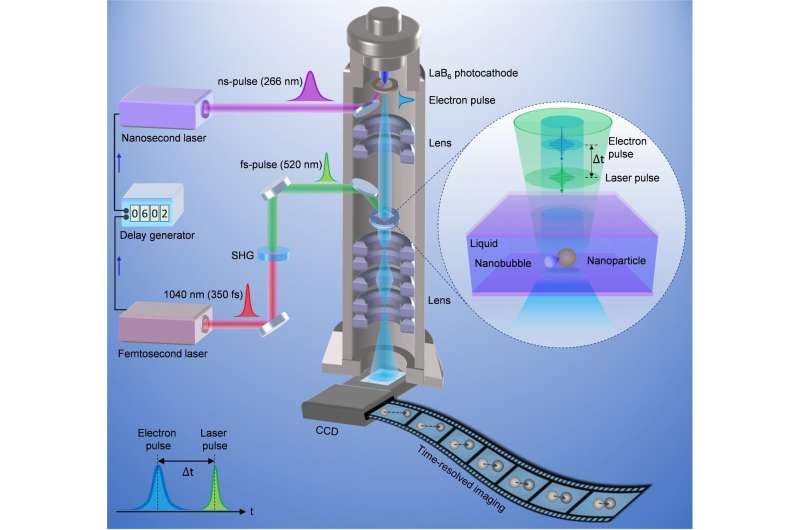August 28, 2017 report
Using four-dimensional electron microscopy to track diffusion of nanoparticles in a liquid

A team of researchers at Caltech has developed a way to capture on film the superfast propulsive motion of Brownian objects, particularly those at the nanoscale. In their paper published on the open-access site Science Advances, the team describes using four-dimensional electron microscopy techniques to capture real-time imagery of gold nanoparticles as they diffused in a liquid.
Tiny particles suspended in hot liquid are observed to move in a seemingly random fashion. Such movement was noted by Robert Brown in the early 19th century, a phenomenon thus called Brownian motion. In more recent times, researchers have focused on Brownian motion as it relates to even smaller particles—micro and nano particles. Unfortunately, due to technological limitations, it was previously impossible to capture the action on film—instead, researchers have pieced together stills taken using an electron microscope. In this new effort, the researchers report on a technique they have developed that overcomes this problem, offering a new way to study diffusion of extremely tiny particles.
The new approach involves the use of four-dimensional microscopy, which entails using both extremely fast laser pulses and transmission electron microscopy—it is based, the researchers note, on a pump-probe working mechanism. The first of two lasers excites the particles, while the second takes a picture of the action—it happens so quickly that the results can be viewed as video.
In their experiments, the researchers fired a first pulse at gold nanoparticles, then fired a second pulse that captured images of tiny bubbles forming near the surface of the nanoparticles and exciting them. Increasing the energy of the first pulse, the team noted, resulted in merging many of the tiny bubbles, causing different types of movement by the nanoparticles. The researchers suggest their technique could be used by other researchers to study dispersion systems, particularly those that are out of equilibrium. It could also lead the way, perhaps, to the development of light-powered nanorobots working inside liquid systems.
More information: Xuewen Fu et al. Photoinduced nanobubble-driven superfast diffusion of nanoparticles imaged by 4D electron microscopy, Science Advances (2017). DOI: 10.1126/sciadv.1701160
Journal information: Science Advances
© 2017 Phys.org




















